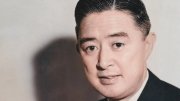Harvard schools confer all sorts of practitioner doctoral degrees: familiar ones, like Doctor of Medicine and Juris Doctor, and many lesser known, like Doctor of Education Leadership (Ed.L.D.) and Doctor of Design (D.Des.). But the Faculty of Arts and Sciences maintains a monopoly on Doctor of Philosophy (Ph.D.) degrees—for those of a scholarly bent, encompassing liberal arts disciplines and numerous joint ventures with the professional schools. Excluding sub-fields, the Graduate School of Arts and Sciences bestows the highest degree in 56 programs (one short of Heinz, the ketchup maker, and its 57 varieties).
That distinction shows up in a highly visible way at Commencement, a matter of intense feeling in certain academic precincts (if nowhere else). As Cynthia Rossano, the doyenne of all things festival rites, has written, “[T]he doctor’s gown, crimson at Harvard since 1955, is like a pulpit or judge’s gown, faced with velvet, and with three velvet bars on full round open sleeves.” But only those who earn Ph.D. degrees get to strut the crimson finery and the obvious distinction it conveys at a glance. Other doctoral recipients, gowned in black, have now and then lobbied unsuccessfully to don the bright plumage, too.
This 374th Commencement, tradition bent a little, but did not break. For there remains the matter of headgear: till now, mortarboards for everyone except the Ph.D.s, who get to wear (frankly weird) tams. Through a deep process which Primus will not disclose (to protect those of delicate sensibilities and keep from exposing his sources), this year, non-Ph.D. doctoral-degree recipients could smoosh their hair under tams, too. This Solomonic solution manages to be inclusive of all those who have labored long over their studies, while preserving due regard for those whose trajectory bends toward academic application of their degrees. A tip of the hat to those who pulled it off, presumably in keeping with the venerable standards of the Intercollegiate Registry of Academic Costume (yes, a real thing: you can look it up).
A Harvard-wide tip of the hat to John P. Reardon Jr. ’60 (universally, Jack), who retired June 30, concluding 60 years of service. The résumé proceeds from his initial appointment in admissions in 1965, to director of admissions and financial aid, director of athletics, and nearly a quarter-century as executive director of the Alumni Association (through 2014), followed by continuing Jack-of-all-trades service (with mastery of every role, mind you) as counselor to presidents, liaison to the governing boards, adviser, mentor, fundraiser, and more.
His 2014 Harvard Medal citation honored Reardon for “shap[ing] the Harvard we know and love, touching and changing countless lives through your skillful leadership and sage counsel, your impeccable judgment and inimitable way with people.”
That understates it, although the “way with people” sounds right. There isn’t a program for it, yet, but Reardon has effectively earned Harvard’s first Ph.D. in people skills. He was and is this institution’s consummate people person of the twentieth and twenty-first centuries, whom the combatants on any side of any Crimson controversy could trust and respect. Especially at a fraught moment, remembering that there are people like Jack Reardon matters. As the medal citation concluded, “The whole Harvard family salutes you—and thanks you.” Indeed, we do.
From the Memorial Minute for the late Robert S. Brustein, who left New Haven (where he founded the Yale Repertory Theatre) for Cambridge (where he became the director of the Loeb Drama Center and made it the home of the American Repertory Theater): “Coming to Harvard, he apparently worried that the institution might not always support theater of high quality. President Derek Bok was said to have given that guarantee. The joke was that if the box office did not provide enough for the A.R.T., then Bok’s office would.”









